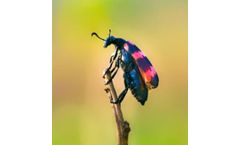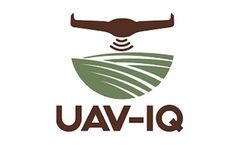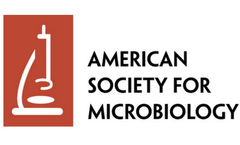Refine by
Pheromones Articles & Analysis
24 articles found
The nature and amount of insect pheromone elements are highly speciose, and even within close groups pheromone elements can be very different. Pheromone Based on Functional Groups Pheromone Based on Carbon Number (Main Chain) Pheromone Plant Growth Regulators The chemical compositions of the identified insect ...
Alarm pheromones have two main differences with other pheromones: Alarm pheromones are not very specific compared with other pheromones. ...
In the realm of insect pest management, the utilization of pheromones has proven to be a game-changer. One such pheromone that has garnered significant attention in recent years is Japonilure. ...
Gel materials have become a popular choice for delivering pheromones in various applications due to their unique properties. Pheromones are chemical signals that are naturally produced by animals and insects to communicate with each other. ...
Why oleyl alcohol is popular as pheromone? Oleyl alcohol is a type of fatty alcohol that has found application in the formulation of pheromones. ...
Introduction of Pheromone Release Technology Pheromone release technology refers to the use of chemicals known as pheromones for communication purposes in various industries. ...
Pheromone Solid-phase Synthesis is a method used for the production of pheromones. ...
Lastly, the perfume industry can benefit from pheromone activity screening service. Pheromones are a key factor in creating unique scents. ...
Biological insecticides include preparations of insecticidal active ingredients extracted from higher plants (such as natural pyrethrins, rotenone, etc.), insecticides made from living microorganisms (fungi, bacteria, and viruses), insect physiologically active substances (such as pheromones, etc.). Chemically synthesized insecticides include inorganic insecticides (such as ...
Insect pheromones exist in insects in nature, and all insects produce and recognize pheromones. ...
This is consistent with what we’ve seen in both pheromone traps and egg traps. The chart below shows the male catches per day for another customer. ...
” Scheid vineyards has been working with Kent Daane on the use of pheromone traps to monitor vine mealybugs, and they are planning on exploring the use of augmented biological control release as part of their vine mealybug integrated management plan. ...
Some eliminated pesticides entirely by using techniques such as crop rotation and pheromone traps to capture pests, says Pretty. “Thirty percent of the crop systems were able to transition to zero pesticides,” Pretty says. ...
ByEnsia
PBAN is a naturally occurring substance that encourages female insects to produce pheromones to attract males for mating; researchers have developed a genetically modified strain of E. coli that yields a synthetic PBAN used in an innovative process for moth control. Mixed with a sugar solution, the synthetic PBAN is placed in a trap as food for female moths, inducing them to ...
Non-chemical approaches to pest control — such as removing infested fruit on trees, releasing parasitoid wasps that attack moth eggs, and using pheromones that disrupt mating by preventing males from finding females — have been applied with limited success. ...
ByEnsia
It was clear the pheromones were highly effective in disrupting the codling moth.” A Sustainable Solution Pheromones confuse the male insect so that they are unable to find the female to fertilize the eggs, thus diminishing pest populations without killing the pests or using toxic substances. ...
This paper presents INTACO, a hybrid Ant Colony Optimisation (ACO) algorithm coupled with a local search applied to the joint production and preventive maintenance scheduling problem in the flowshop sequencing problem. INTACO uses pheromone trail information to perform modifications on complete joint production and preventive maintenance solutions unlike more traditional ant ...
Elevated levels of intracellular arsenite and 'cross talk' between the HOG and pheromone response pathways, observed in arsenite-treated hog1 cells, prolonged the G1 delay but did not cause a persistent G1 arrest. ...
Elevated levels of intracellular arsenite and 'cross talk' between the HOG and pheromone response pathways, observed in arsenite-treated hog1 cells, prolonged the G1 delay but did not cause a persistent G1 arrest. ...
Using a servosphere (locomotion compensator), locomotory behavior of Colorado potato beetle Leptinotarsa decemlineata Say (Coleoptera: Chrysomelidae) larvae was measured in detail in response to pulsed and non-pulsed odors of hostplant and conspecific pheromone. Second instars showed decreased straightness of movement, and all larvae showed decreased speed, in response to potato ...










